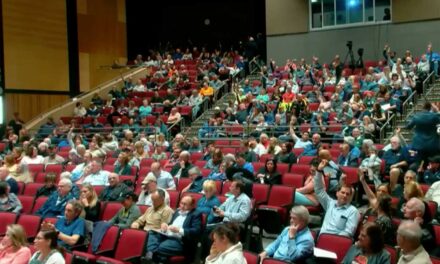Published in the August 28, 2018 edition.
By MARK SARDELLA
WAKEFIELD – Last Friday, the town issued an alert confirming what Lake Quannapowitt’s deepening green hue was already signaling.
“Based on elevated levels of cyanobacteria (blue-green algae), MA Dept. of Public Health thresholds for recreational waters have been exceeded,” the alert posted on the towns web site warned.
The alert goes on to say that water that displays the greenish hue that Lake Quannapowitt has assumed, “may contain algae capable of producing toxins that can be dangerous to humans and pets.”
The elevated cyanobacteria level that has impacted the Lake for years typically peaks late in the season, leading to the familiar greenish water color from August into the fall.
“People and pets should avoid contact in areas of algae concentration – even on shore,” the alert continues. “Do not swallow water and rinse after contact.”
According to the Environmental Protection Agency, there are three major causes of elevated cyanobacteria levels: sunlight, slow-moving water and nutrients (nitrogen and phosphorus).
Unfortunately, Lake Quannapowitt is almost a perfect storm of all three. A very shallow lake, Quannapowitt’s average depth is six feet; it’s maximum depth is 11 feet. That means that the sunlight that cyanobacteria need
penetrates from the surface to the bottom.
Quannapowitt is also an “impounded lake,” with a control dam outlet at Lowell Street. Because of the limited flow in and out, total water turnover reportedly occurs only once every year to year and a half.
High levels of nutrients like nitrogen and phosphorus are also known to fuel cyanobacteria growth. Lawn and garden fertilizers used throughout the watershed area enter the Lake through stormwater runoff.
The town has been looking for ways to address the problem, but short-term solutions investigated have proven costly.
In 2014, the Board of Selectmen, appointed a 13-member committee to study and research ways to improve the water quality of the Lake. Two years later, in June of 2016, the committee reported back to the selectmen.
As stated in the committee’s report, a major goal of the Lake Committee was to eliminate blue-green algae (aka cyanobacteria) due to its toxicity and competition with healthy lake organisms.
The committee’s conclusion was that whatever is done to address the condition of the lake will not be cheap and will not happen overnight, although certain “in lake” approaches seem to promise quicker results.
According to the committee’s report, those “in lake” approaches include “aeration and circulation” and treating the Lake with aluminum sulfate to control phosphorus – a major nutrient source for cyanobacteria.
Water circulating “SolarBees” are one possible method of aerating and circulating the Lake water that the committee looked at. SolarBees are mechanical devices that sit low on the water’s surface and pull up water from the bottom and circulate it out closer to the surface. At one point, the committee visited a lake on Cape Cod with a similar cyanobacteria problem where the SolarBee mechanisms had been used with success.
But the Lake Committee was split on the use of SolarBees. Despite reports of their successful use in similarly afflicted water bodies, committee member Alison Simcox claimed that the there was no support for their efficacy against cyanobacteria in peer-reviewed literature.
With aluminum sulfate treatment, the chemical binds with phosphorus and makes it unavailable in sufficient amounts to support cyanobacteria blooms.
The committee determined that either of the two approaches could be implemented for a 10-yeat period at a cost less than $1 million.
So called “land side” controls include measures that could be implemented around the watershed to improve the condition of the Lake. Those include a number of methods to limit the nutrients that enter the Lake from runoff, including public education on limiting fertilizer use, various green infrastructure approaches, stepped up collection of leaves and brush, street sweeping, catch basin cleaning, storm water runoff treatment systems and shoreline riparian zones, among others.
But the land side measures, while important in the long term, were not seen by the committee as sufficient to reach the stated goals of controlling cyanobacteria in the near term, if at all.
The committee’s report recommended that a consultant be hired to objectively review all available information and help the town decide if more investigation is needed to select a final action plan.
The committee also recommended continuing to monitor levels of cyanobacteria toxicity, dissolved oxygen levels and temperature conditions.
If aeration/circulation is selected to address the Lake’s issues, the committee recommended further investigation into available methods, configurations and manufacturers.
Another recommendation was that the town assign a town employee to advise property owners on things like use of fertilizer and other related matters.
Holding public forums to discuss Lake Quannapowitt conditions and possible solutions was another recommendation.
Since filing its report, the Lake Quannapowitt Committee has continued to meet.




